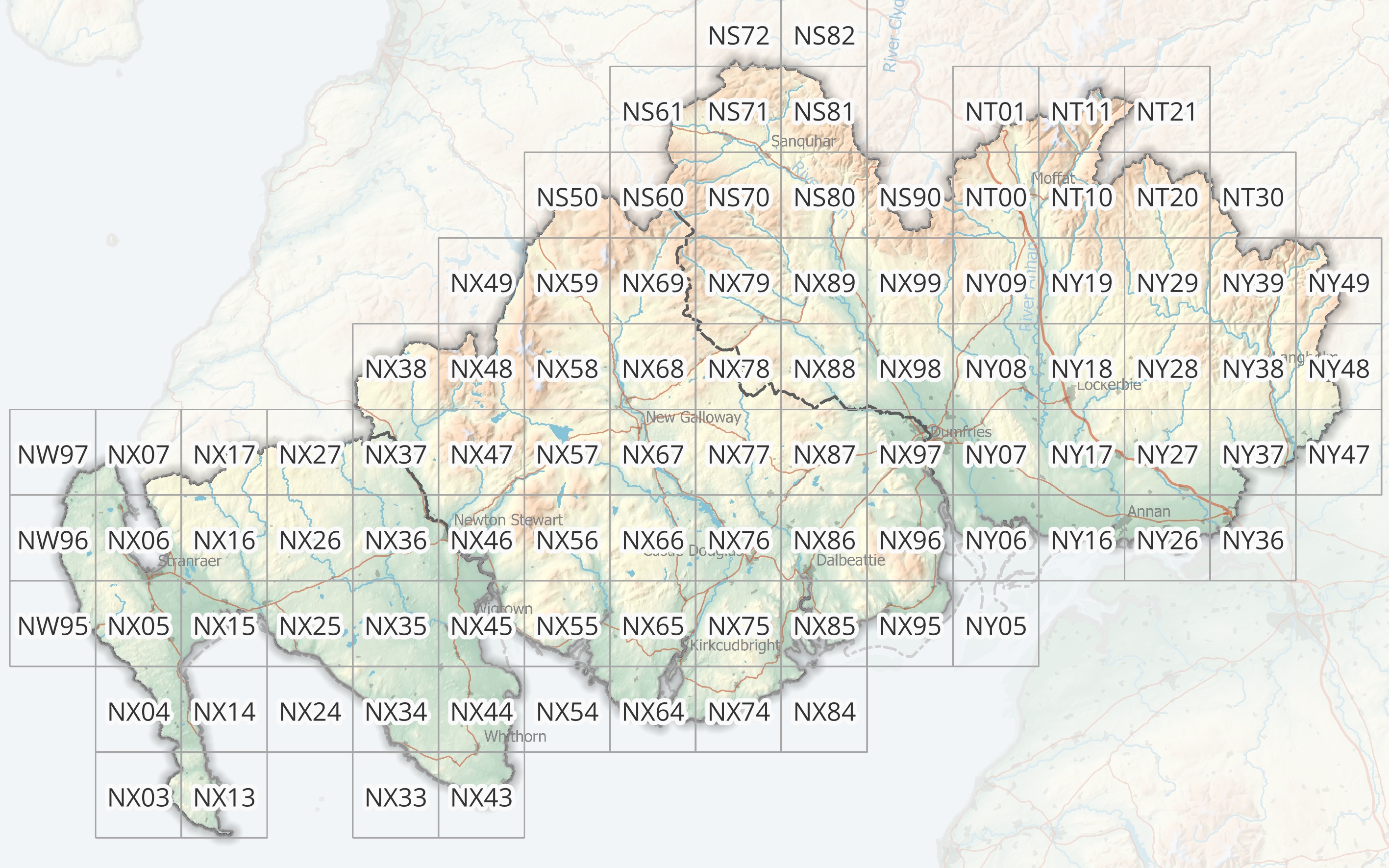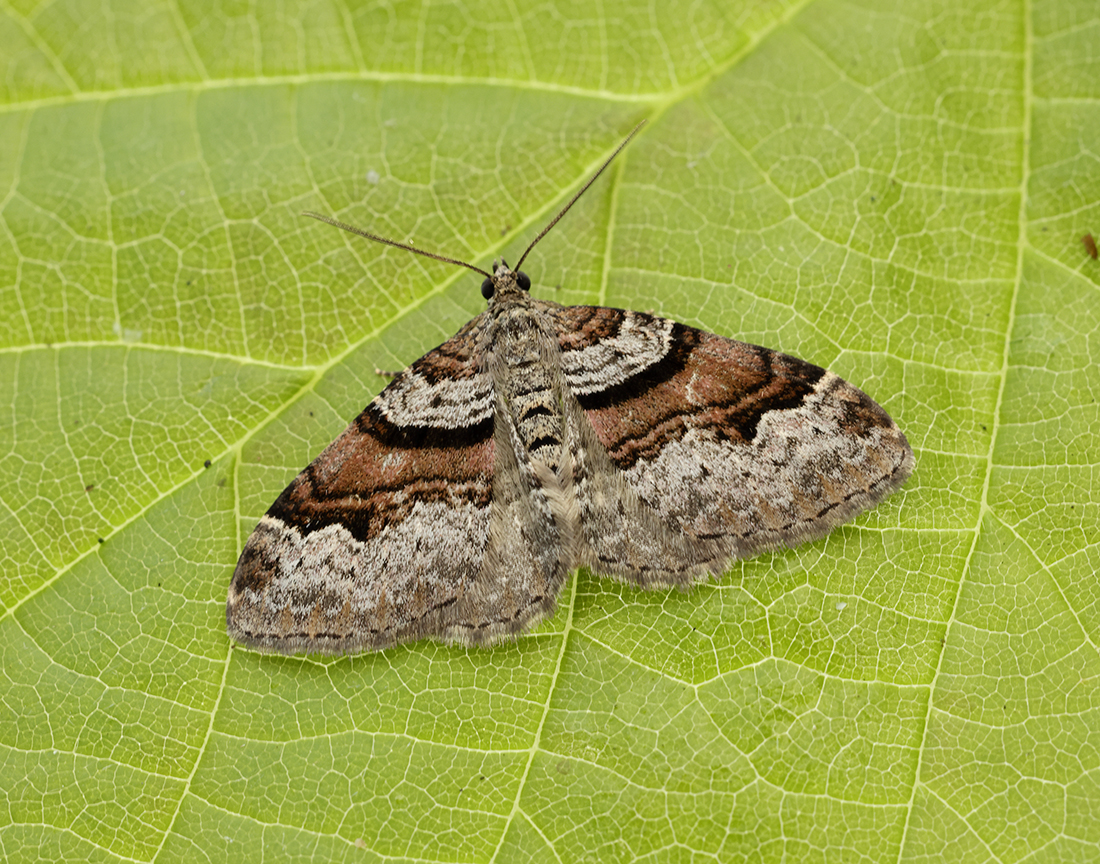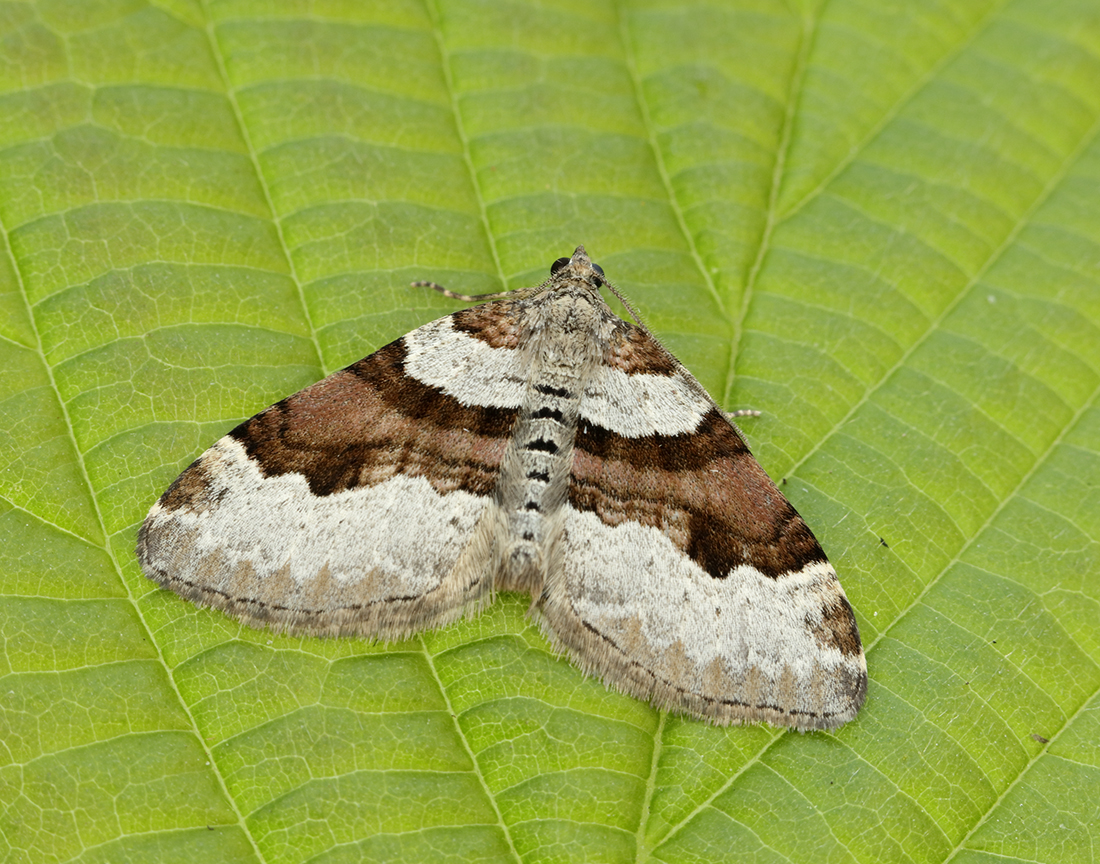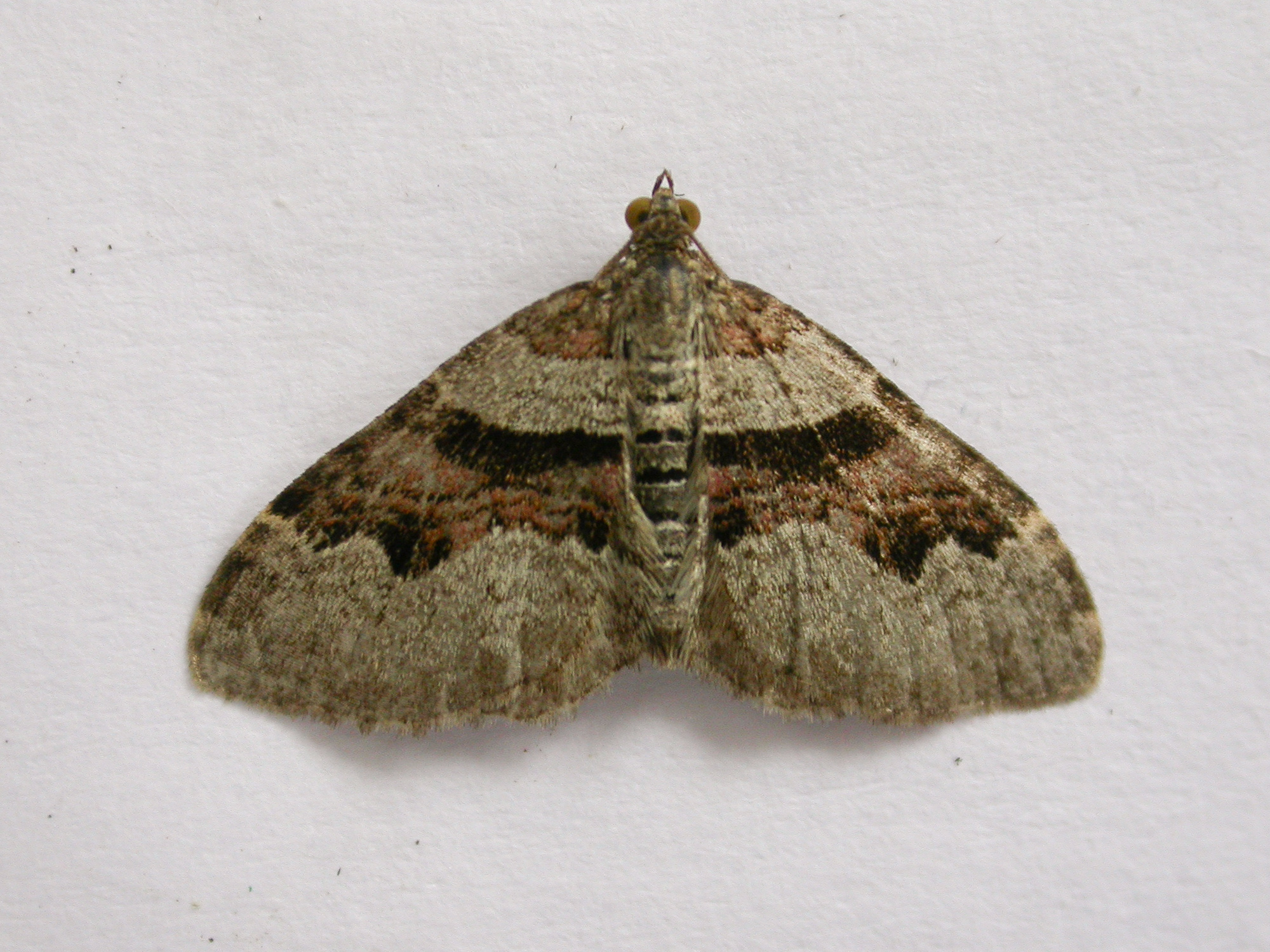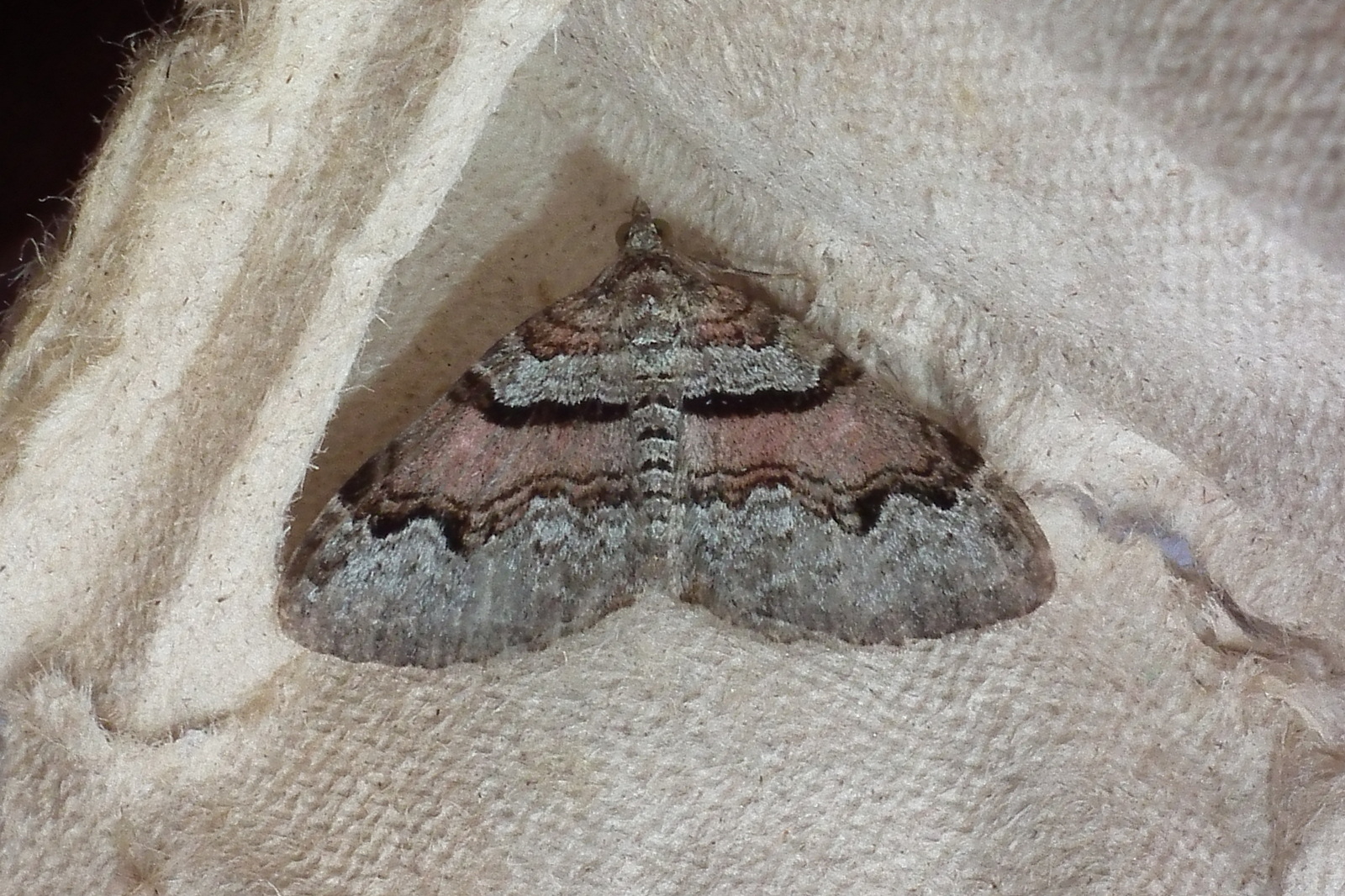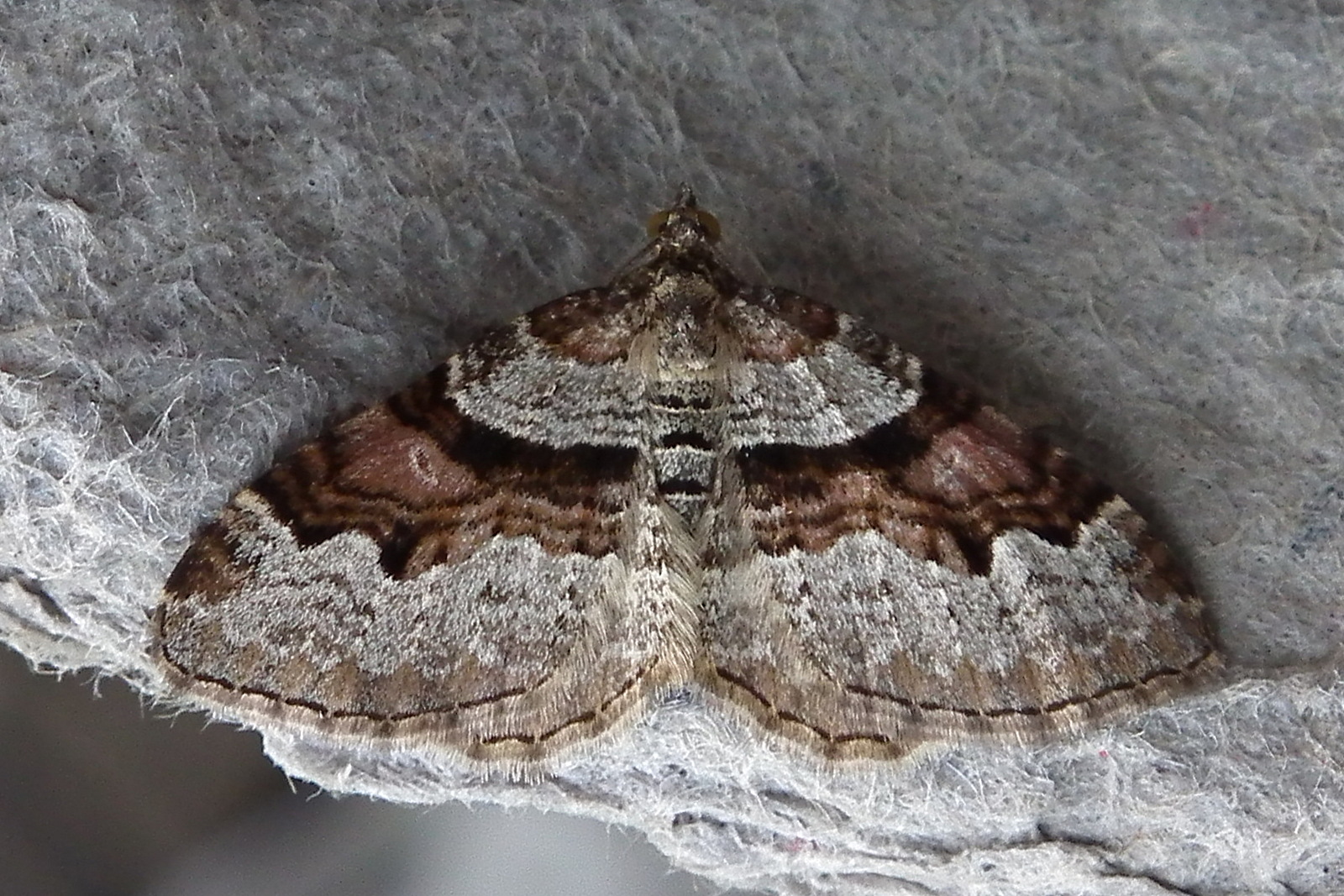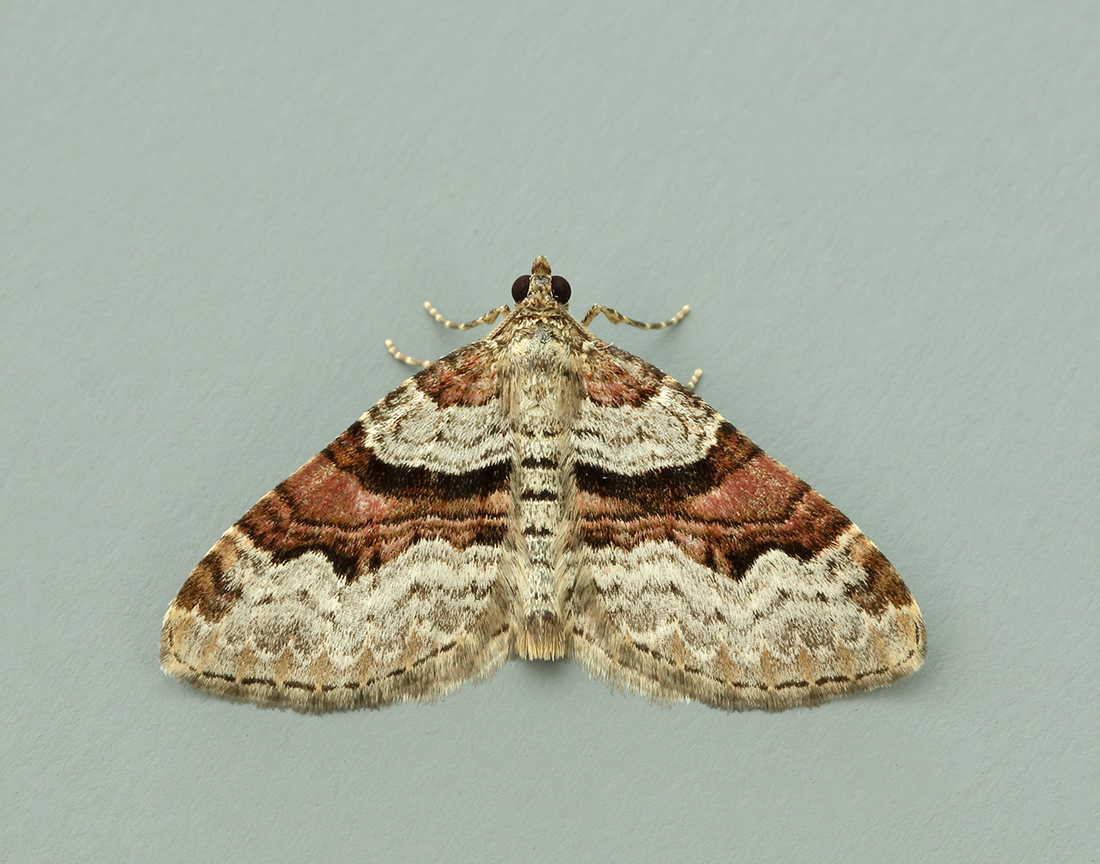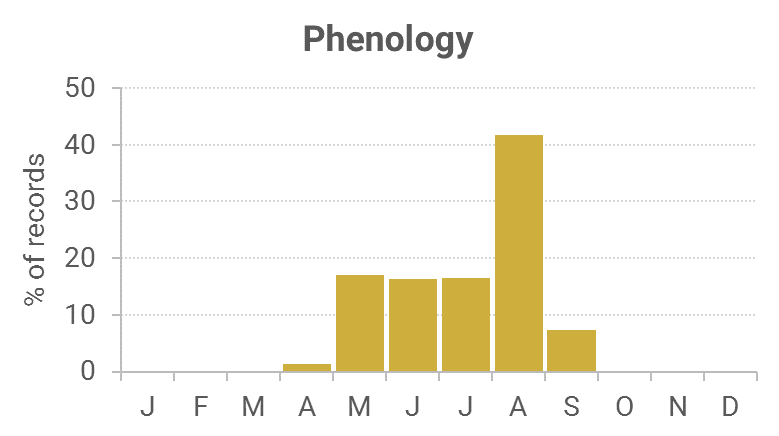Identification
The rosy-red, brown and black cross-band on a grey forewing is diagnostic.
Life cycle
Two generations. Overwinters as a pupa. Larvae present June to mid-July and again September.
Larval foodplants
Unknown in the wild.
Habitat
A wide variety, including upland grassland and moorland, lowland woodland and hedgerows.
History 1860-2010
Somerville of Glasgow (1858) under C. propugnaria had found it on a visit near Moffat (VC72) in August, 1858. However, Lennon (1863) makes no mention of it near Dumfries in his wanderings. In his obituary it is stated he used to walk 20 miles a day in search of insects right up until his seventies, whereafter he slowed down.
Gordon (1919) stated it was common at light at Corsemalzie (VC74) and was also to be found when dusking. The first for Kirkcudbrightshire was found near Gatehouse-of-Fleet during 1942-43 by Archibald Russell who was stationed there.
Since the Rothamsted stations were used from the mid 1970s and with the advent of portable moth-trapping it had been found to be common and widespread, with a protracted season from mid-April to mid-September.


